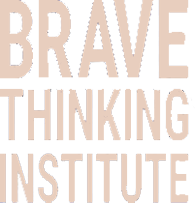 Stan (Stanislav) Grof, M.D., Ph.D., born July 1, 1931, is a Czech psychiatrist with more than fifty years of experience researching the healing and transformative potential of non-ordinary states of consciousness. His groundbreaking theories influenced the integration of Western science with his brilliant mapping of the transpersonal dimension.
Stan (Stanislav) Grof, M.D., Ph.D., born July 1, 1931, is a Czech psychiatrist with more than fifty years of experience researching the healing and transformative potential of non-ordinary states of consciousness. His groundbreaking theories influenced the integration of Western science with his brilliant mapping of the transpersonal dimension.
Life and career
Grof received his M.D. from Charles University in Prague in 1957 and then completed his Ph.D. in medicine at the Czechoslovakian Academy of Sciences in 1965, training as a Freudian psychoanalyst at this time. In 1967 he was invited as an Assistant Professor of Psychiatry at Johns Hopkins University School of Medicine in Baltimore, United States, and went on to become Chief of Psychiatric Research at the Maryland Psychiatric Research Center where he worked with Walter Pahnke and Bill Richards among others. In 1973 he was invited to the Esalen Institute in Big Sur, California, and lived there until 1987 as a scholar-in-residence, developing his ideas.
As the founding president of the International Transpersonal Association (founded in 1977), he went on to become a distinguished adjunct faculty member of the Department of Philosophy, Cosmology, and Consciousness at the California Institute of Integral Studies, a position he remains in as of 2015.
Grof featured in the film Entheogen: Awakening the Divine Within, a 2006 documentary about rediscovering an enchanted cosmos in the modern world.
Grof distinguishes between two modes of consciousness: the hylotropic and the holotropic. The hylotropic mode relates to “the normal, everyday experience of consensus reality”. The holotropic has to do with states which aim towards wholeness and the totality of existence. The holotropic is characteristic of non-ordinary states of consciousness such as meditative, mystical, or psychedelic experiences. According to Grof, contemporary psychiatry often categorizes these non-ordinary states as psychotic. Grof connects the hylotropic to the Hindu conception of namarupa (“name and form”), the separate, individual, illusory self. He connects the holotropic to the Hindu conception of Atman-Brahman, the divine, true nature of the self.
Near-Death Experience (NDE) hypothesis
In the late 1970s, Grof proposed a psychological hypothesis to explain the near-death experience. According to Grof the NDE reflects memories of the birth process with the tunnel representing the birth canal.
Cartography of the psyche
Stanislav Grof has researched the effects of psychedelic substances, which can also be induced by non-pharmacological means. Grof has developed a “cartography of the psyche” based on his clinical work with psychedelics, which describe the “basic types of experience that become available to an average person” when using psychedelics or “various powerful non-pharmacological experiential techniques”.
Sensory barrier and the collective-biographical barrier
“Deep self-exploration” starts for many people with unspecific sensory experiences. They are a sensory barrier that one has to pass through.
The next level is the recollective-biographical level and the individual unconsciousness. These involve the personal biography and unresolved emotional issues. In “experiential work” this autobiographical material is fully relived. Relevant memories and associated fantasy material may emerge as a single or condensed experience, which Grof calls COEX. According to Grof, most of these COEXs are connected with specific aspects of the birth process. Memories of physical traumas form an integral part of this level of the psyche.
Encounter with birth and death: dynamics of the perinatal matrices
According to Grof, the reliving of emotional and physical pain can become so intense that identification with “the pain of entire groups of unfortunate people, all of humanity, or even all of life”, can manifest. This is accompanied by “dramatic physiological manifestations”.
At this level, death may be encountered and birth relived. According to Grof, there are four “hypothetical dynamic matrices governing the processes related to the perinatal level of the unconsciousness”, called “basic perinatal matrices” (BPM). These BPM’s correspond to the stages of birth during the process of childbirth.
BPM I: The Amniotic Universe
This is the original symbiotic unity of the fetus with the maternal organism. Elements of this state can be accompanied by, or alternate with, experiences of a lack of boundaries and obstructions, such as the ocean and the cosmos. The extreme expression of the sacred and spiritual quality of BPM I is the experience of cosmic unity and the unio mystica.
BPM II: Cosmic Engulfment and No Exit
This matrix starts with the onset of labor. The intrusion of chemicals and the pressures of labor change the situation in the womb, and “interrupt the fetus’ blissful connection with the mother and alter its pristine universe.” Accessing this layer gives rise to a strong feeling of “no escape”. When experiencing this level, the sense of loneliness and helplessness is overwhelming.
BPM III: The Death-Rebirth Struggle
This matrix is connected with the move of the fetus through the birth channel. It involves a struggle for survival. When experiencing this layer, strong aggression and demonic forces are encountered. Biographical memories associated with this matrix include struggles, fights, and adventurous activities.
BPM IV: The Death-Rebirth Experience
This matrix is related to the stage of delivery, the actual birth of the child. The build-up of tension, pain, and anxiety is suddenly released. The symbolic counterpart is the Death-Rebirth Experience, in which the individual may have a strong feeling of impending catastrophe, and maybe desperately struggling to stop this process. The transition from BPM III to BPM IV may involve a sense of total annihilation:
This experience of ego death seems to entail an instant merciless destruction of all previous reference points in the life of the individual.
According to Grof what dies in this process is “a basically paranoid attitude toward the world which reflects the negative experience of the subject during childbirth and later.” When experienced in its final and most complete form,
…ego death means an irreversible end to one’s philosophical identification with what Alan Watts called skin-encapsulated ego.”
Bibliography
- Realms Of The Human Unconscious: Observations From LSD Research (1975), republished by Souvenir Press in 2010
- The Human Encounter With Death (1977) with Joan Halifax
- LSD Psychotherapy (1980)
- Beyond Death: The Gates Of Consciousness (1981) with Christina Grof
- Ancient Wisdom And Modern Science (1984) Edited by Stanislav Grof
- Beyond the Brain: Birth, Death, And Transcendence In Psychotherapy (1985)
- Human Survival And Consciousness Evolution (1988) Edited with Marjorie L. Valier
- The Adventure Of Self-Discovery: Dimensions of Consciousness And New Perspectives In Psychotherapy (1988)
- Spiritual Emergency: When Personal Transformation Becomes A Crisis (1989) Edited with Christina Grof
- The Stormy Search For The Self: A Guide To Personal Growth Through Transformative Crisis (1990) with Christina Grof
- The Holotropic Mind: The Three levels Of Human Consciousness And How They Shape Our Lives (1992) with Hal Zina Bennet
- Books Of The Dead: Manuals For Living And Dying (1993)
- The Thirst For Wholeness: Attachment, Addiction And The Spiritual Path (1994) by Christina Grof
- The Transpersonal Vision (1998) book and audio
- The Cosmic Game: Explorations Of The Frontiers Of Human Consciousness (1998)
- The Consciousness Revolution: A Transatlantic Dialogue (1999) with Peter Russell and Ervin Laszlo. Foreword by Ken Wilber
- Psychology Of The Future: Lessons From Modern Consciousness Research (2000)
- Caterpillar Dreams (2004) with Melody Sullivan
- When The Impossible Happens: Adventures In Non-Ordinary Reality (2006)
- The Ultimate Journey: Consciousness And The Mystery Of Death (2006)
- “New Perspectives in Understanding and Treatment of Emotional Disorders,” Chapter 13 in Psychedelic Medicine: New Evidence for Hallucinogens as Treatments, Michael J. Winkelman and Thomas B. Roberts (editors) (2007). Westport, CT: Praeger/Greenwood.
- LSD: Doorway to the Numinous: The Groundbreaking Psychedelic Research into Realms of the Human Unconscious (2009)
- Holotropic Breathwork: A New Approach to Self-Exploration and Therapy (2010)
- Healing Our Deepest Wounds: The Holotropic Paradigm Shift (2012)
Learn more at http://www.stanislavgrof.com/
Source of information – https://en.wikipedia.org





































